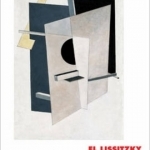El Lissitzky: The Experience of Totality
BookThis item doesn’t have any media yet
2014 | Art, Photography & Fashion
This is a fascinating and sumptuously illustrated overview of the work of El Lissitzk, one of the 20th-century's most influential and experimental artists. Eliezer (Lazar) Markovich Lissitzky, El Lissitzky (1890-1941) was one of the most experimental and controversial artists to work with the Russian and European avant-garde during the early twentieth century. Equally prolific as a painter, designer, architect and photographer, he connected countries and cultures as a leading ambassador between the Soviet and European avant-gardes of the 1920s, promoting Suprematist and Constructivist art in the West and European abstract movements in Russia. For El Lissitzky, art was conceived not as a personal expression and production of objects, but rather as a collective and social activity. Working with the Russian painter and theoretician Kazimir Malevich, he developed the new visual language of Suprematism (an abstract art based upon "the supremacy of pure artistic feeling" rather than on visual depiction of objects), which he applied not only to painting, but also to print and book works, architectural and theatre projects, ceramics, educational theory and propaganda.
Fusing this array of media, his three-dimensional work "Proun Room" used the actual space of a room to merge painting, sculptural installation and architecture; similarly, with his students he adorned the trams and buildings of Vitebsk with Suprematist triangles and squares, and used his "Proun" motifs to design costumes and machinery for the stage (most famously for the 1920 Futurist opera, Victory over the Sun). This volume provides a comprehensive and superbly illustrated view of Lissitzky's influential career.
Related Items:
| Published by | La Fabrica |
| Edition | Unknown |
| ISBN | 9788415691532 |
| Language | N/A |
Images And Data Courtesy Of: La Fabrica.
This content (including text, images, videos and other media) is published and used in accordance
with Fair Use.
